Introduction
If you’ve ever watched your feline friend pressing their paws rhythmically against a soft surface, congratulations—you’ve witnessed the adorable phenomenon known as “making biscuits.” This curious behavior, where cats push their paws in and out against soft objects (or sometimes even on you!), has fascinated cat owners for generations. But why do cats make biscuits? What’s the meaning behind this peculiar yet endearing habit?
In this comprehensive guide, we’ll explore the fascinating world of cat kneading behavior, uncover what experts say about why do cats knead, and reveal six weird but absolutely adorable facts about this quintessential feline trait. Whether your kitty is an occasional biscuit-maker or a professional baker, understanding this behavior will deepen your bond with your furry companion.
What Exactly Is Cat Kneading?
Before diving into why do cats make biscuits, let’s clarify what this behavior actually looks like. Cat kneading (also called “making biscuits” due to its resemblance to kneading dough) refers to the rhythmic motion cats make with their front paws, alternately pushing and pulling against a soft surface. When your cat is making biscuits, they’ll typically:
- Press their paws forward with claws slightly extended
- Pull back while retracting their claws
- Repeat this motion in a steady rhythm
- Often accompany the behavior with purring, half-closed eyes, or drooling
This cat biscuit making behavior can last anywhere from a few seconds to several minutes. Some cats knead with all four paws, though most commonly use just their front paws. The intensity varies too—some cats knead gently, while others put their whole body into the motion!
Fact #1: Making Biscuits Is an Instinctive Behavior That Starts in Kittenhood
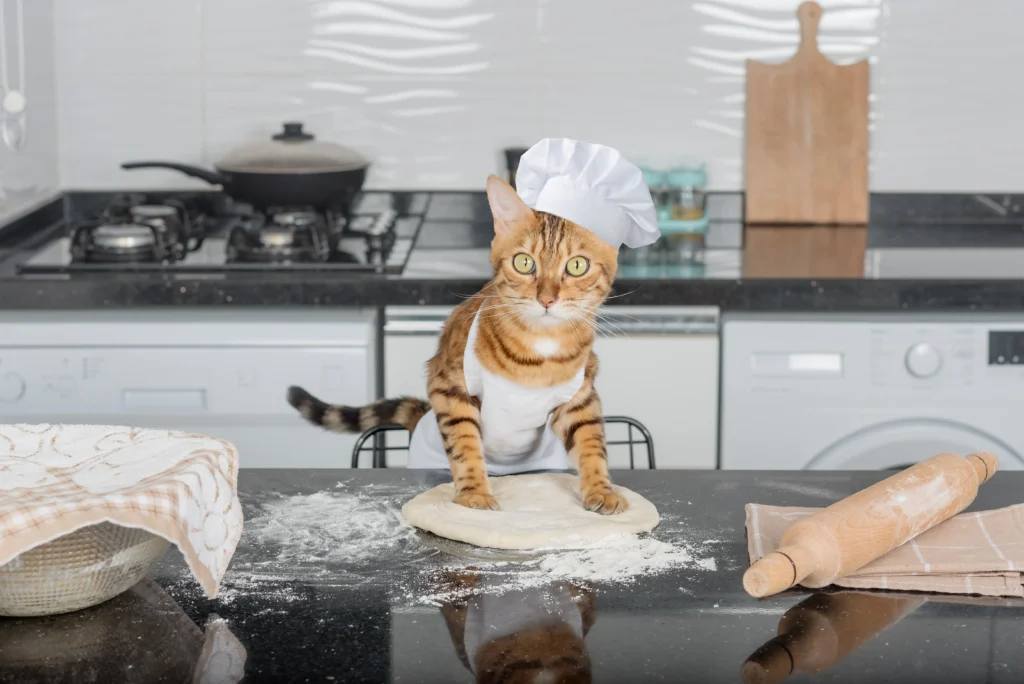
One of the most fascinating aspects of why do cats knead with their paws relates to their earliest days of life. Kneading is an instinctive behavior that begins when cats are just tiny kittens nursing from their mother. When nursing, kittens instinctively push their paws against their mother’s mammary glands to stimulate milk flow.
This early association between kneading, comfort, food, and maternal security creates a powerful connection in a cat’s brain. When your adult cat is making biscuits, they’re essentially tapping into this primal, comforting behavior from kittenhood. It’s no wonder the meaning behind cat kneading is so deeply rooted in feelings of contentment and security!
Dr. Gary Weitzman, veterinarian and president of the San Diego Humane Society, explains: “Kneading is a leftover behavior from kittenhood. Kittens knead their mother’s mammary glands to stimulate milk flow, and this behavior persists into adulthood as a self-soothing mechanism.”
Fact #2: Making Biscuits Is a Sign of Happiness and Contentment
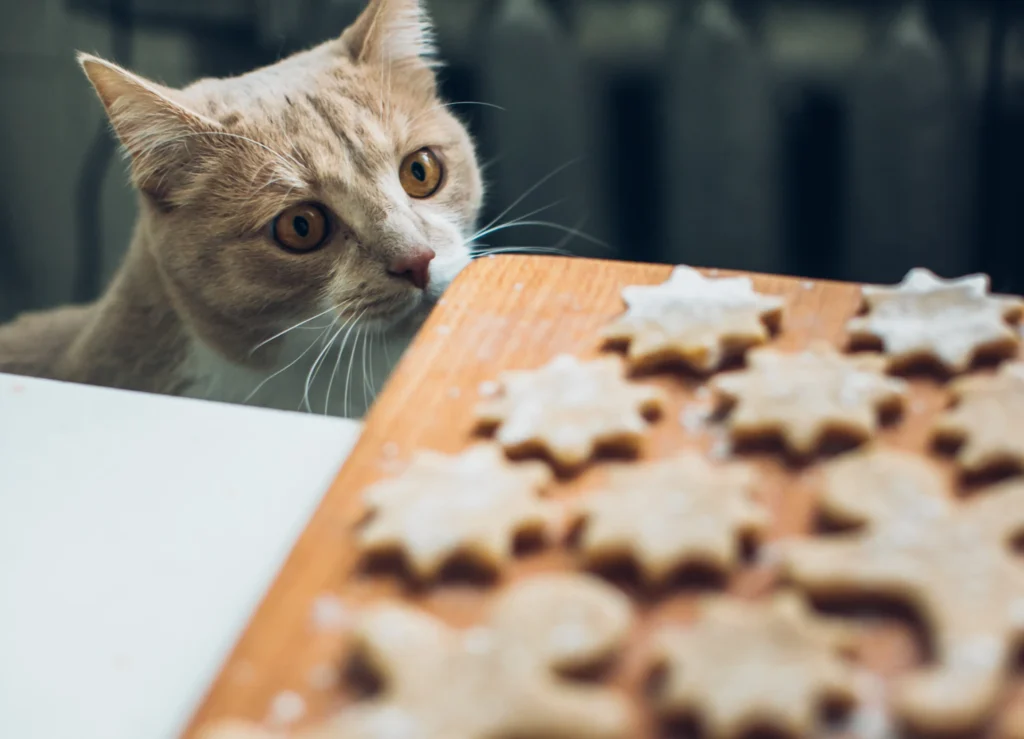
Have you noticed that your cat often engages in cat kneading and purring simultaneously? This combination is the feline equivalent of a blissful smile! Why do cats make biscuits, they’re typically in a state of contentment and relaxation.
This answers one of the most common questions: what does it mean when a cat makes biscuits? In most cases, it means your cat feels safe, secure, and happy. The rhythmic motion of kneading helps release endorphins—those feel-good hormones that create a sense of pleasure and well-being.
Cat behavior kneading is particularly common when cats are:
- Settling down for a nap
- Enjoying petting sessions
- Curling up in a favorite spot
- Relaxing with their favorite human
So next time you observe your cat making biscuits, take it as a compliment! Your feline friend is expressing their contentment in your presence.
Fact #3: why do Cats Make Biscuits to Mark Territory and Show Affection
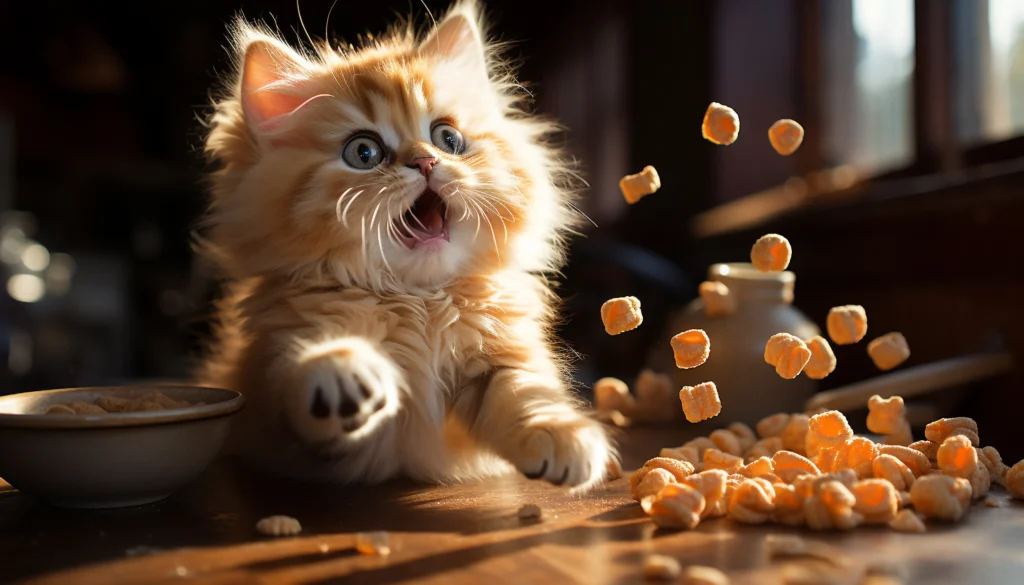
Ever wondered why do cats make biscuits on me? The answer might surprise you—it’s actually a compliment of the highest order in cat language! When your cat kneads on you, they’re engaging in a dual-purpose behavior: showing affection and marking you as their territory.
Cats have scent glands in their paw pads, and the cat kneading behavior activates these glands, transferring their scent onto whatever (or whoever) they’re kneading. This scent marking is a cat’s way of saying, “This human belongs to me!”
Additionally, is cat kneading a sign of affection? Absolutely! Why do cats make biscuits on their humans, they’re demonstrating trust and bonding. The behavior indicates that they view you as a safe, comforting presence in their lives—similar to how they viewed their mother during kittenhood.
Cat behaviorist Jackson Galaxy notes: “When cats knead on their humans, they’re essentially saying ‘you’re mine’ while simultaneously showing tremendous vulnerability. It’s one of the purest forms of feline affection.”
Fact #4: The Mystery Behind Why do Cats Make Biscuits on Blankets and Soft Surfaces
Many cat owners wonder why do cats make biscuits on blankets and other soft surfaces. The answer lies in both instinct and comfort. Soft, plush materials like blankets, pillows, and comforters remind cats of two things: their mother’s soft belly and comfortable resting places.
In the wild, cats’ ancestors would knead tall grass or soft ground to create a comfortable sleeping spot. This instinctive behavior persists in domestic cats today, explaining why your feline friend might engage in intense cat biscuit making behavior right before settling down for a nap.
The texture of blankets is particularly appealing for making biscuits because:
- The softness mimics fur and soft body surfaces
- The material often retains the cat’s scent from previous kneading sessions
- Blankets typically yield pleasantly to the pressure of kneading
- The warmth of blankets enhances the comfort factor
Dr. Mikel Delgado, certified cat behavior consultant, explains: “When cats knead on blankets, they’re preparing their resting place both physically and psychologically. The behavior helps them feel secure in their environment while creating the perfect nap spot.”
Fact #5: The Curious Connection Between Making Biscuits and Other Behaviors
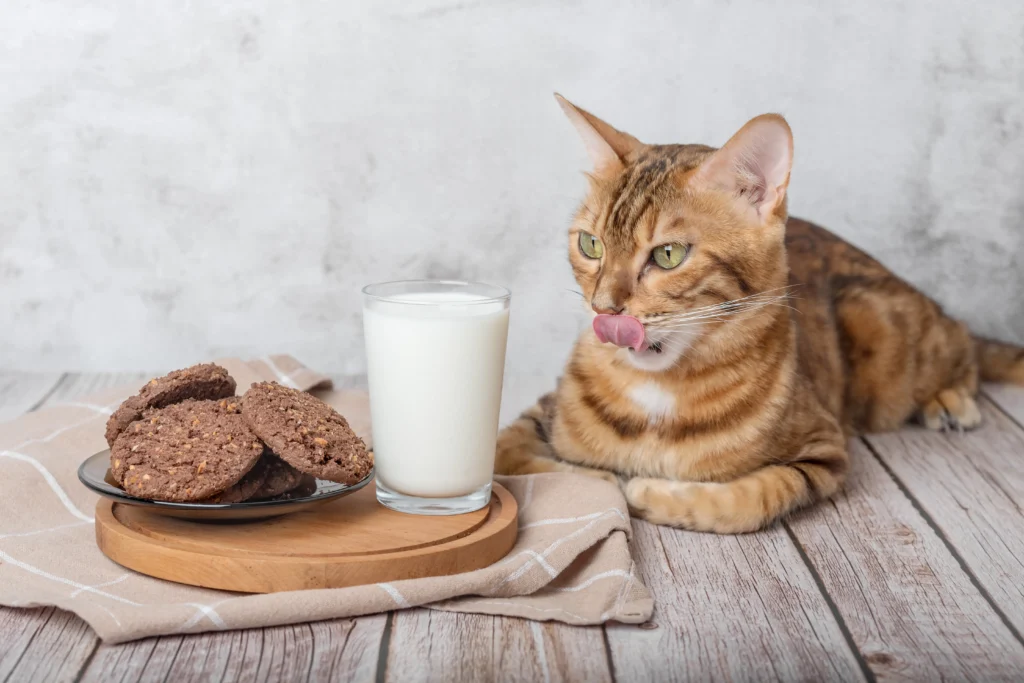
For some cats, making biscuits doesn’t happen in isolation. Many cat parents notice interesting combinations of behaviors that occur alongside kneading. Understanding these combinations can provide additional insight into the cat making biscuits meaning.
Why Do Cats Knead and Bite?
Have you ever experienced your cat sweetly making biscuits on you, only to be surprised by a sudden gentle bite? This behavior, sometimes called “love biting,” often accompanies kneading in particularly content cats. When examining why do cats make biscuits knead and bite, experts point to overstimulation and kittenhood behavior.
During nursing, kittens sometimes gently bite their mother while kneading. This instinctive behavior can persist into adulthood, especially during moments of intense pleasure. The bite isn’t meant to hurt—it’s actually part of the affectionate behavior, though it might not always feel that way to us humans!
Why Do Cats Knead and Suckle?
Some adult cats exhibit an interesting behavior where they knead and suckle simultaneously, often on blankets, stuffed animals, or other soft items. This combination behavior is particularly common in cats who were weaned too early from their mothers.
When investigating why do cats knead and suckle, veterinary behaviorists often point to the comfort factor. This behavior allows cats to recreate the nurturing experience of nursing, providing psychological comfort even in adulthood. While mostly harmless, excessive suckling can sometimes lead to ingestion of fabric fibers, so it’s worth monitoring if your cat displays this behavior regularly.
Fact #6: Why do Cats Make Biscuits Before Lying Down
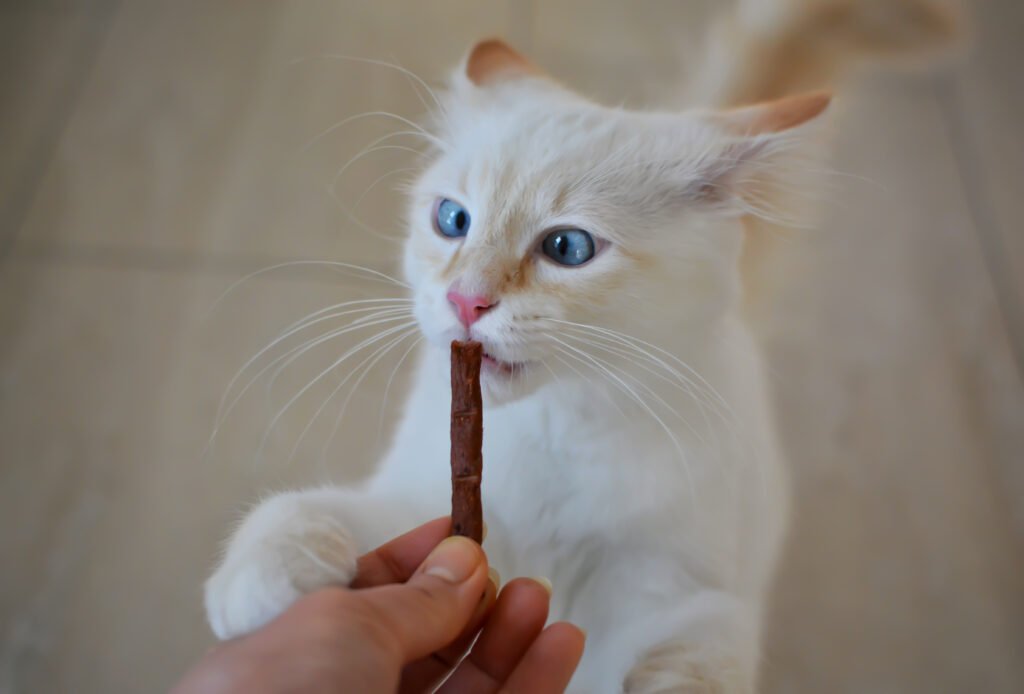
Have you noticed your cat engaging in a thorough kneading session right before settling in for a nap? This why do cats make biscuits before lying down question has both historical and practical answers.
From an evolutionary perspective, wild cats would knead grass or foliage to:
- Check for hidden dangers (snakes, insects) in the resting area
- Create a more comfortable depression to rest in
- Mark the territory with their scent
- Flatten the area for better temperature regulation
When your domestic cat performs this ritual before napping, they’re acting on instincts that served their ancestors well for thousands of years. Even though your cat’s plush bed doesn’t harbor hidden snakes, the instinct to “prepare” the sleeping area remains strong!
Dr. Elizabeth Colleran, president of the American Association of Feline Practitioners, notes: “The pre-sleep kneading ritual serves multiple purposes for cats. Beyond making the sleeping space more comfortable, it helps them transition mentally from an alert state to a restful one.”
When Cat Kneading Becomes Problematic
While making biscuits is generally a normal, healthy behavior, there are a few situations where cat behavior kneading might become problematic:
Painful Kneading
Some cats knead with claws fully extended, which can be painful when they’re making biscuits on your lap. Instead of discouraging the behavior entirely, try these solutions:
- Keep a thick blanket nearby to place between you and your kneading cat
- Gently trim your cat’s claws regularly (or use soft nail caps designed for cats)
- Slowly reposition your cat to a nearby pillow if the kneading becomes too intense
Excessive or Obsessive Kneading
If your cat’s making biscuits seems compulsive, excessive, or is accompanied by signs of distress, it might indicate anxiety or other underlying issues. In these cases, consulting with your veterinarian is recommended, as changes in behavior can sometimes signal health concerns.
Understanding Different Cat Kneading Styles
Just as humans have different personalities, cats have varying styles when it comes to making biscuits. Some interesting variations in cat kneading behavior include:
The Air Kneader
Some cats will happily why do cats make biscuits in the air, kneading nothing but their own imagination! This adorable behavior typically happens when a cat is exceptionally content, often while being petted or held.
The Intense Biscuit Maker
These dedicated kneaders put their whole body into the motion, sometimes drooling or entering an almost trance-like state while making biscuits. The meaning behind cat kneading in these intense cases often reflects deep contentment and security.
The Synchronized Kneader-Purrer
Masters of multitasking, these cats perfectly synchronize their kneading with their purring, creating a rhythmic pattern that showcases the ultimate in feline satisfaction. The combination of cat kneading and purring represents peak cat happiness!
How to Respond why do Cats Make Biscuits
When your cat engages in making biscuits, especially on you, it’s a special moment of bonding. Here are some ways to respond that honor this natural behavior while protecting yourself from sharp claws:
- Provide appropriate kneading surfaces – Soft blankets, cat beds, or dedicated kneading pads can give your cat suitable outlets for this behavior.
- Use positive reinforcement – Gentle praise and petting (when appropriate) can strengthen the bond during kneading sessions.
- Never punish kneading – Since making biscuits is a natural, instinctive behavior, punishing your cat for it can create confusion and stress.
- Redirect if necessary – If your cat’s kneading becomes too intense or painful, gently redirect them to an appropriate surface rather than stopping the behavior completely.
- Enjoy the compliment – Remember that when your cat makes biscuits on you, they’re essentially paying you the highest compliment in cat language!
Common Questions About Cats Making Biscuits
Why Do Cats Make Biscuits?
While kneading is a universal cat behavior, not all cats display it with the same frequency or intensity. Some cats may rarely knead, while others seem to be professional biscuit makers! The variance depends on individual personality, early life experiences, and comfort levels.
Why Does My Cat Only Make Biscuits on Certain People?
If your cat seems to prefer making biscuits on certain family members, it likely comes down to association and comfort. Cats often choose to knead on people they feel most secure with or who remind them of comforting early-life experiences.
Can Making Biscuits Indicate Pain or Health Issues?
While cat biscuit making behavior is typically a sign of contentment, changes in kneading patterns can sometimes indicate health concerns. If your normally non-kneading cat suddenly starts kneading excessively, or if kneading is accompanied by signs of distress, consult your veterinarian to rule out potential health issues.
At What Age Do Kittens Start Making Biscuits?
Kittens begin the kneading motion almost immediately after birth as they nurse from their mother. This instinctive behavior helps stimulate milk flow and secure a feeding position. As they grow, the behavior transitions from a purely functional one to an emotional comfort behavior.
The Science Behind Why do Cats Make Biscuits
From a scientific perspective, why do cats knead with their paws has several neurological and evolutionary explanations:
Evolutionary Advantages
Cat kneading likely served several evolutionary purposes for wild felines:
- Territory marking: Wild cats would knead areas to deposit their scent via foot pads, marking safe territories.
- Nest preparation: Female cats in the wild knead to prepare soft birthing areas for their kittens.
- Comfort creation: Kneading helps flatten grasses and foliage to create more comfortable resting spots.
Neurological Rewards
The rhythmic motion of making biscuits triggers the release of endorphins in a cat’s brain, creating a self-rewarding behavior loop. This explains why cats often appear so blissful while kneading—they’re essentially giving themselves a natural mood boost!
Research published in the Journal of Feline Medicine and Surgery suggests that rhythmic behaviors like kneading activate the brain’s pleasure centers, similar to how purring creates vibrations that promote healing and well-being.
Making Biscuits Across Different Cat Breeds
While all domestic cats share the kneading instinct, some interesting patterns emerge when comparing cat kneading behavior across breeds:
- Siamese and Oriental breeds often display more intense and frequent kneading behaviors
- Maine Coon cats typically knead with great deliberation and purpose
- Persian cats may knead less frequently but with greater intensity when they do
- Domestic shorthairs show the widest range of kneading styles and frequencies
These variations stem from both genetic predispositions and the early socialization experiences unique to each breed’s typical upbringing.
Conclusion: The Heartwarming Truth Behind Why do Cats Make Biscuits
The next time you witness your feline friend engaging in that rhythmic pushing and pulling motion, you’ll have a deeper appreciation for what does it mean when a cat makes biscuits. This seemingly simple behavior connects your modern house cat to their wild ancestors and their earliest kittenhood experiences.
Why do cats make biscuits, your favorite blanket, or their special spot on the couch, they’re expressing contentment, security, and—in many cases—affection. It’s one of the many ways our feline companions communicate their feelings and strengthen their bond with us.
So embrace those biscuit-making sessions (perhaps with a protective blanket if those claws get too enthusiastic!), and recognize them for what they truly are: one of nature’s most adorable displays of feline happiness and trust.
Additional Resources for Understanding Cat Behavior
To learn more about why do cats make biscuits and other fascinating feline behaviors, check out these trusted resources:
- The American Association of Feline Practitioners
- Cornell University’s Feline Health Center
- International Cat Care
- The Indoor Pet Initiative from Ohio State University
Want to explore more fascinating cat behaviors? Check out these related articles:
- 10 Secret Messages Behind Your Cat’s Tail Movements
- Why Do Cats Purr? The Science Behind Your Cat’s Motor
- Cat Body Language: What Your Feline Friend Is Really Telling You
- Understanding Your Cat’s Meows: A Complete Translation Guide
- Why Cats Bring You “Gifts” and What It Really Means
This article was last updated on April 11, 2025, to include the latest research on cat kneading behavior and why do cats make biscuits.


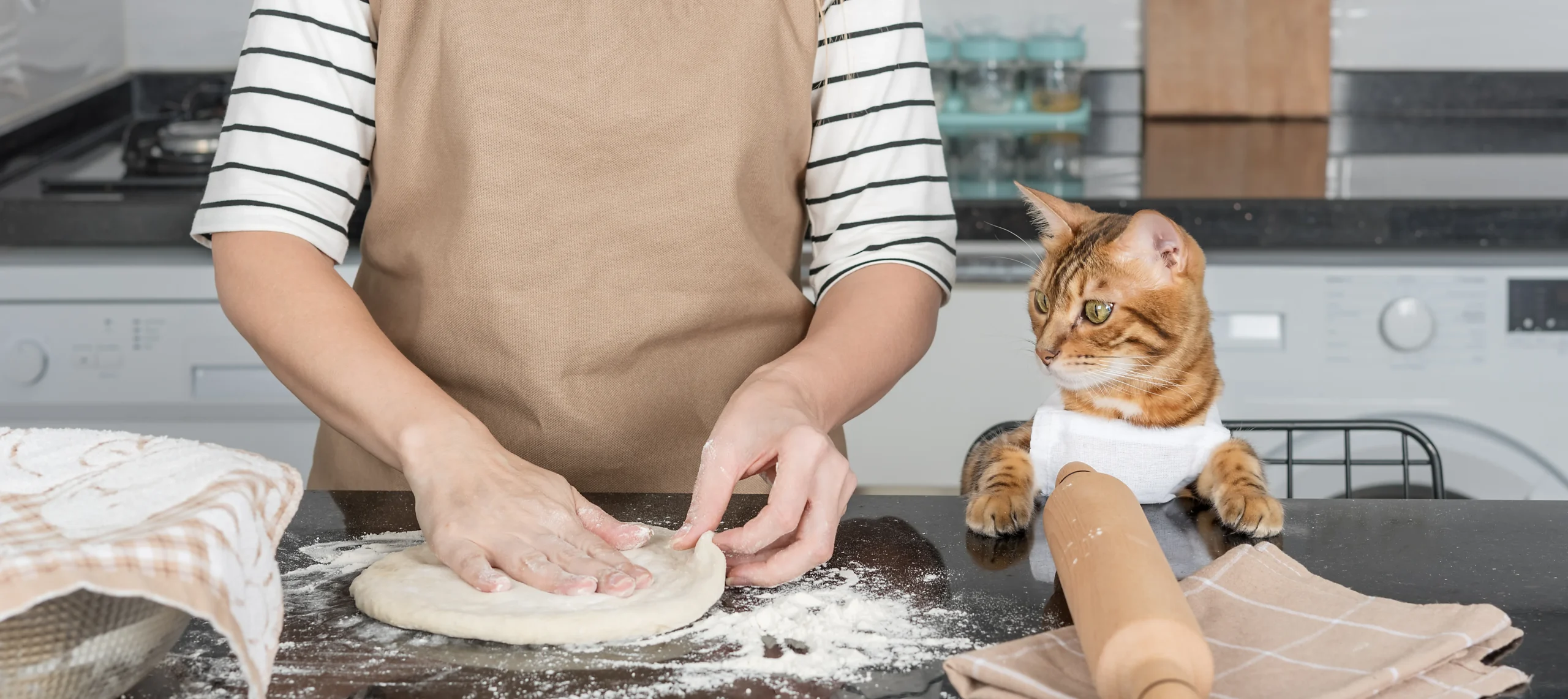


Leave a Comment